Your Guide To Healthy Cookware Options
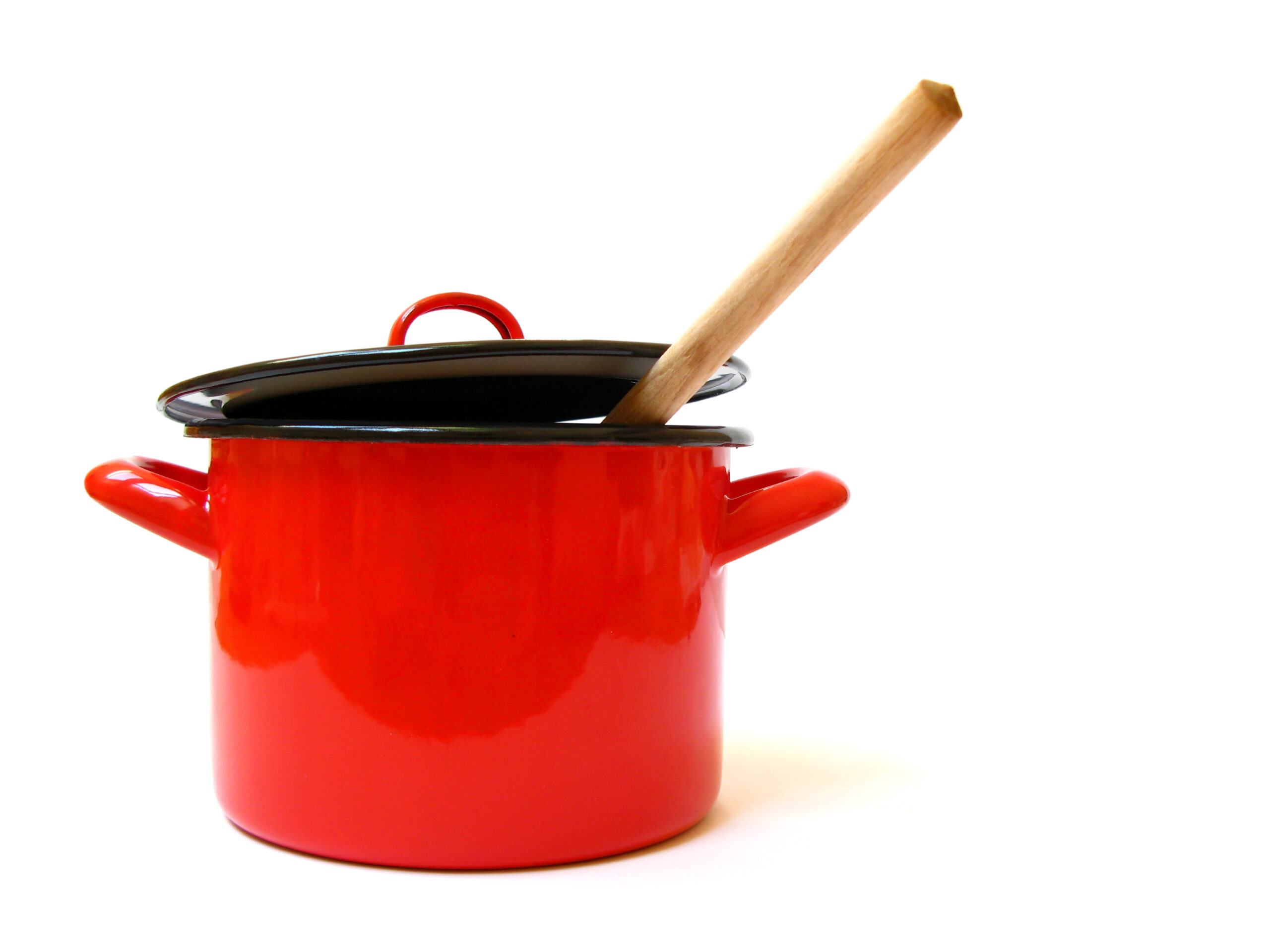
So now your pots and pans can be harmful for you, too? We have to worry about finding healthy cookware options on top of everything else?
Thankfully, safe and healthy cookware is something we can find – it simply is something we need to think about, prioritize, decide upon, purchase and use. It’s important and easier to do than you might think.
non-stick isn’t healthy cookware
Non-stick pots and pans (all the rage when they were first invented and now very difficult to escape) are leaching carcinogenic toxins into the foods you cook in them. They were never designed for high-heat cooking, but last I checked, most of us aren’t cooking on low heat. Heat is heat and if we want to cook our food, we need heat.
As nice as it is to not have your pancakes stick, it’s not worth the health risks once that mystery coating starts leaching into your breakfast. Non-stick pans are coated with polytetrafluoroetheylene (PTFE), also known as Teflon. When these pots and pans reach high temperatures, they release toxic fumes that have been known to cause flu-like symptoms in humans and even kill pet birds. Teflon, made by DuPont, has been sued for hundreds of millions of dollars as the chemicals have been linked to birth defects.
“Perfluoro-octanoic acid (PFOA), an ingredient of Teflon and also known as ‘C-8’, is a suspected carcinogen now found in humans, other animals and plants in the US, Europe and Asia. PFOA is very persistent. Released into the environment it looks as if it will take literally millions of years to biodegrade. The company ‘3M’ (which once manufactured PFOA) found that it took 4.4 years for just half of it to be excreted from workers’ bodies.”(Source).
They are calling Teflon gas the new DDT.
No amount is okay. And for more on this topic, please read Slow Death By Rubber Duck.
[learn-more font_size=”14″ font_size_small=”10″ optin=”” image_url=”https://www.meghantelpner.com/wp-content/uploads/2017/03/MT_0020-17_HaH-MT-640×640.jpg”] Want to learn more? Get on the Waitlist for our popular online course, Healthy at Home. Join us for this life changing course.[/learn-more]
Responsibly Dispose Of Your Old Cookware
Given that the chemicals in Teflon are persistent (we’re talking millions of years), the landfill is not an option. It is your obligation to responsibly dispose of your old coated cookware (and rice cookers, and roasting pans, and muffin tins etc.). Finding where and how to dispose of these pans is a growing problem, but your best bet is to try the following:
- Curbside toxic pick-up. More on that here.
- Scrap metal yard. These places are typically equipped to recycle metal. And if you feel bad taking these toxic pans to the people who work there, we can all hope their employers are taking the responsible steps to ensure the health and safety of their employees.
- Mail it away. Some companies offer a mail-in option to discard of your old pans. Do your digging. It is YOUR responsibility to ensure their safe and responsible disposal.
Now that you’ve responsibly disposed of all your non-stick pans, you may be wondering: What the heck should you replace them with? It seems like every day there’s a new “eco-friendly” cookware brand with sci-fi-like descriptions and mystery coatings. How do you choose a healthy cookware pan that’s right for you (not to mention the environment?)
Eco-friendly and healthy Cookware Options
Option 1: Cast Iron Cookware
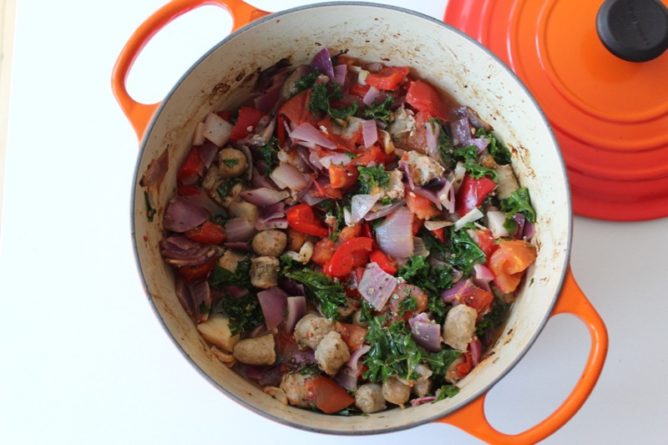
Cast iron is a classic. It’s heavy and will require seasoning (i.e. oiling and baking) between uses, but it has all-natural non-stick capabilities and ups the iron content of your food. If you can get over the sticker shock, enameled cast iron pans combine the benefits of cast iron with easy cleanup. We’re talking heirloom here. Consider this as a lifetime investment and something your children’s children will surely by vying for.
Learn more about using and maintaining cast iron pans here.
Price point: High for enameled cast iron, much lower for regular cast iron.
It’s for you if: You’re shopping for top quality heirloom pieces that are sturdy, safe and tried and tested. If a full set is out of your price range, get one or two pieces in the size you use most often. Who says your soup pot needs to match your frying pan?
We love these: Le Creuset (Canada/USA), as well as Lodge pans.
Option 2: Stainless Steel + Titanium Cookware
If you’re looking for something that’s low risk to both your health and budget, stainless steel is a good bet. According to the Environmental Working Group, stainless steel pans are a good alternative to their non-stick counterparts and brown foods better than Teflon pans. However, there is a risk with stainless steel cookware that nickel will leach into your food. It’s recommended that if you’re sensitive to nickel, you choose an alternative type of cookware. Titanium stainless steel cookware is much more expensive, but it’s of higher quality – certain grades are actually used to make health equipment.
Price point: Low (high for titanium stainless steel).
It’s for you if: You’re not allergic to nickel and you’re looking for good all-around cookware at a reasonable price. This is what we use in the kitchen as stainless steel is low maintenance, easy to clean and very durable.
We love these: Paderno. (Canada/USA)
[learn-more font_size=”14″ font_size_small=”10″ optin=”” image_url=”https://www.meghantelpner.com/wp-content/uploads/2017/03/MT_0020-17_HaH-MT-640×640.jpg”] Want to learn more? Our popular online course, Healthy at Home, shows you how to create a healthy home room by room. Join us for this life changing course.[/learn-more]
Option 3: Ceramic Cookware
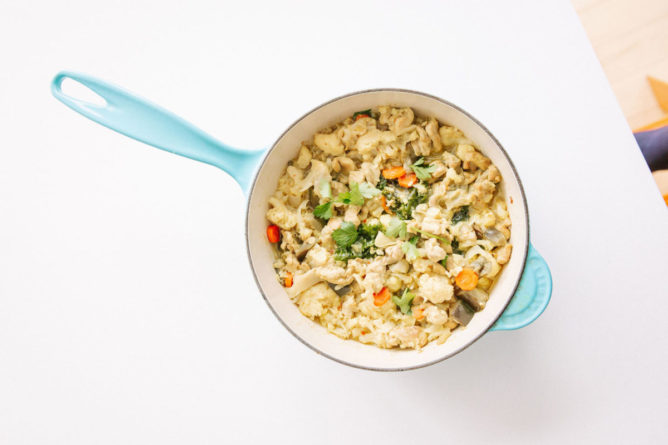
Ceramic cookware is generally safe as a healthy cookware option, but do a little investigating before you purchase. Only choose brands with zero lead content and avoid any ceramics that have a coloured glaze on the inside (this goes for bowls and mugs too) as these colours typically carry toxic chemicals. Some ceramic glazes contain lead, and with use they can wear down over time. Be sure to wash by hand and try not to use them for cooking acidic foods that could damage the glaze.
Price point: Medium.
It’s for you if: You’re not ready to make the leap to enameled cast iron, and you’re prepared to carefully handle your cookware to avoid chipping, this is for you. Once ceramic is chipped, best to turn it into your newest planter.
We love these: Xtrema Cookware.
Option 4: Glass Cookware
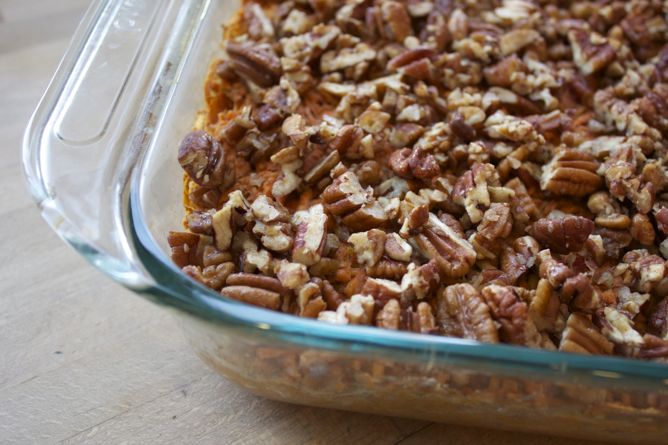
This can be a tough one to find (garage sales and eBay are often your best bet for the old classic solid tempered glass cookware). On the one hand, glass won’t leach any chemicals or metals into your food, but it is heavy and glass is glass, so there is always the possibility of chips, cracks and breaks. There’s also a risk of it, well, exploding. Recent reports have suggested that when Pyrex cookware experiences thermal shock (i.e. going from cold to hot very quickly), there’s a risk of it shattering – so don’t go doing that.
Price point: Low.
It’s for you if: You love watching things cook (glass pots are awesome for teas and soups), are afraid of potential chemicals or are highly sensitive to metals. Just be mindful of how you store these healthy cookware pans to avoid any chipping or cracking.
We love these: Garage sale bargains or Pyrex (just be careful!) (Canada/USA)
What’s your favourite type of healthy cookware to use?
Free Resource Library
Enjoy more than 40 downloadable guides, recipes, and resources.















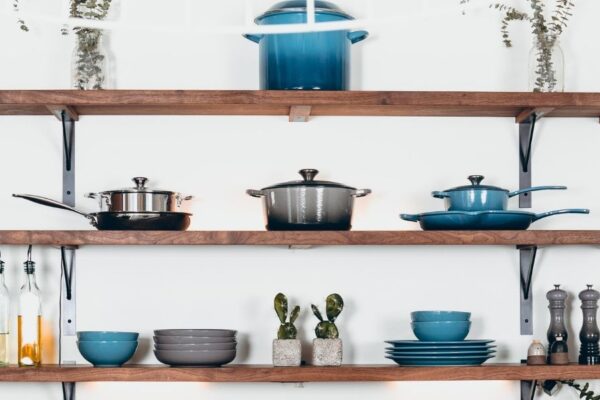

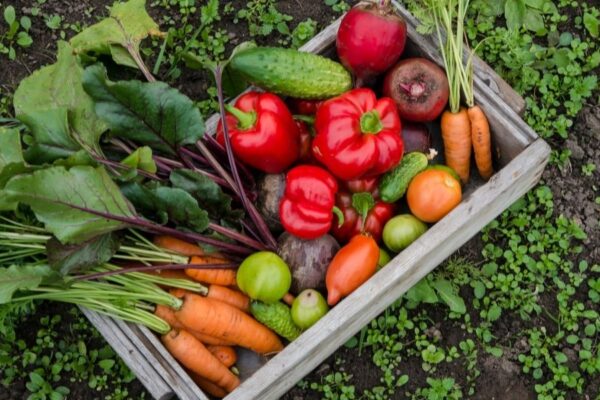


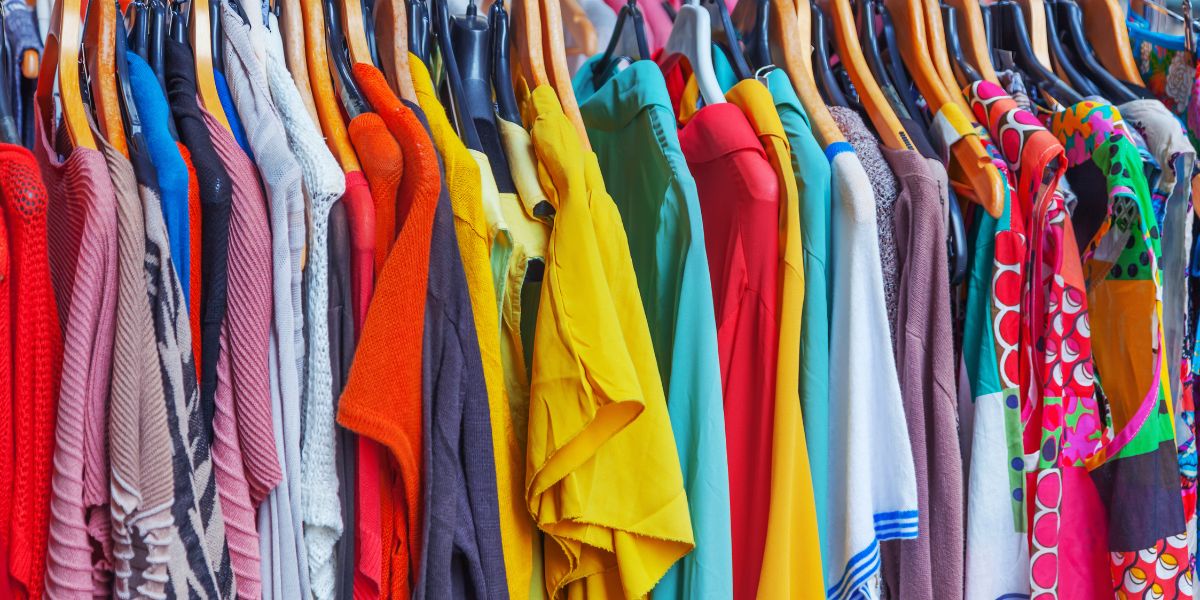

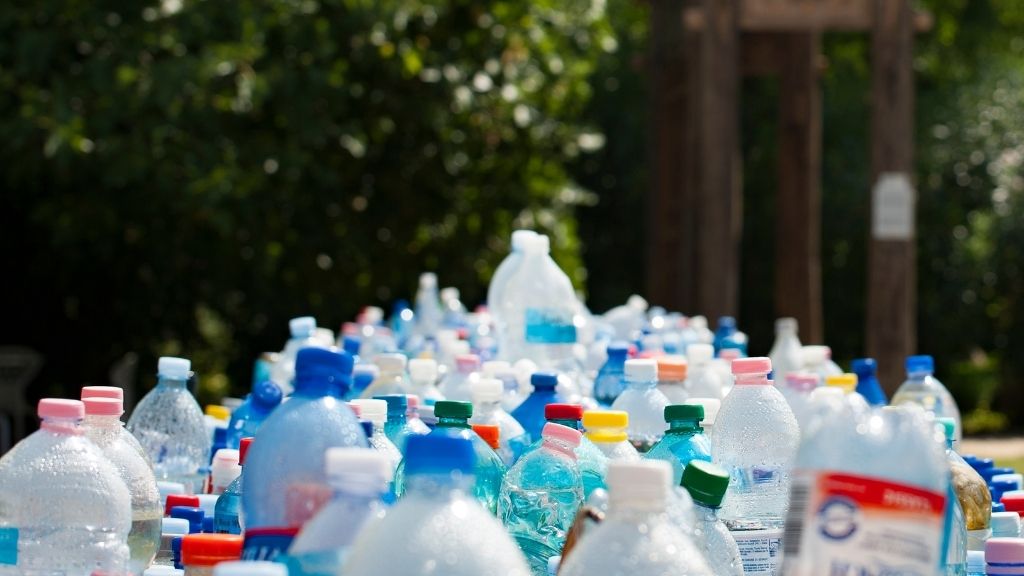

My partner and I recently invested in a set of Saladmaster cookware, which has a titanium cooking surface that doesn’t leach any metals in the food. It’s amazing how a good set of cookware can change your life, your cooking and your eating habits. We liked it so much that we went into business with the company!
Are the new ‘green’ nonstick options safe?
For less expensive cast iron, I love Lodge. It’s not enameled like Le Creuset, and at a much lower price point (though I also love my Le Creuset).
Thank you ever so much, for all the valuable information you consistently share with us. Much appreciated!!!
I threw out all our non stick pans a few years ago and we have a few cast iron fry pans that we love for cooking eggs, omelettes etc. They’re our favourites even though they’re heavy because they release eggs and pancakes so easily. We purchased them from a camping store and they weren’t expensive.
Do you know about GREENPAN (their brand name)? They have always advertised as the best and cleanest – and greenest (whatever that means). So if you didn’t mention them by name, what does that mean??
Mostly though I use my mom’s Visions glass pots but they are starting to chip a lot sadly and not sure if they’ll make it all the way to 20 years ;-)
Just looking for clarification… Titanium cookware, like http://www.titaniumexclusive.com/, seems to have a coating on them that can scratch off. What do you think about these?
Extrema cookware is the best on the market. It has been tested and there are no chemicals leaching in your food. Also is made of clay only and water.
Check out old (used?) cast iron pans. I have been using my grandmother’s cast iron frying pan for the past 40+ years and it’s still going strong. I also have cast iron frying pans that I bought 45 years ago that are even better today than when I got them.
I have just purchased an induction cooktop. I have stainless steel pots but looking for something for a “griddle type” pan for pancakes. Any suggestions…….I can’t seem to find anything for induction along this line.
I would be interested to know what your views are of copper saucepans as I believe they are better at standing high heat needs when cooking. Thank you
Hi Meghan, I have been looking for a non-reactive muffin tray. The Paderno one is coated. Do you still recommend it or do you use something else?
I know this is an old post, so I’m hoping you get notification of comments!
Is the only concern with Teflon the off gassing? I am looking to buy a Vitamix and hear that there are issues with black specks (apparently they are PTFE specks) appearing in food prepared with Vitamix machines. The response from Vitamix is that they are PTFE but as it is “inert” (ie will pass through people intact and will not react to cause any health issues), it is safe to carry on as is. What say you?
Hi Meghan, my husband just bought me a carbon steel natural wok and I’m wondering if it’s a healthy option?
Great Share!!! I use stainless steel pans and they are good.Thanks for telling the information about different types of pans.
Hi Meghan, do you have any recommendations for waffle makers? Seems like they are all coated in Teflon :(
Very interesting information. Enjoyed reading your blog. Thanks for sharing.
Hello. I’m sorry this looks like an older post. I’m wondering if you can recommend good stainless steel brand? I’m so confused with all I have been reading as I’m only concerned with the chemicals leaching when cooking and want the safest option. Which seems to say stainless steel. But only certain qualities? My husband says stainless will not work for non stick but I don’t see another option and refuse to use anything else.
Hi Meghan! Do you have any thoughts on surgical steel cookware? Thanks in advance!
Question for you!
Do you think silicone muffin cups, or silicone baking sheets are also potentially harmful? On another note – we have a le crueset fry pan – however it is still considered non stick. Do you know much about whether their ‘no harmful compounds’ is legit? Love your blog! Thank you!
So I need a skillet to cook my scrambled eggs in,
and I need some type of pan to cook meats in the oven. I like to oven bake chicken breasts, pork chops, roasts…. Etc
As a dumb single guy…Can you tell me what I should buy lol. What would you go with I dont care about cost right now within reason… Just about keeping toxins and or chemicals out of my food!
Hi Meghan,
Many thanks for this article.
So what kind of non-toxic skillet would be best for pancakes – which really stick! Does cast iron fit the bill?
Hi Meghan,
Could you please share what titanium brand pan you use for making pancakes? We use stainless steel but doesnt work well for pancakes!
Thanks!
I have heard that vintage pyrex contains lead. Do you agree or do you feel that pyrex is a safe option.
Hi Megan! I find Your article very informative still cast iron is not safe because is liking rust and metal (iron) in your food. I find the best cookware are Salademaster so far. Top medical clinics in USA are using the same cookware (Salademaster) THENKYOU for Your Good Job informing people and educait them.
Does it concern you that the Xtrema pans are made in China? I looked into buying them but decided against it for that reason.
Would you consider a post on healthy kettles? This info is so good
Do you by chance know of a healthy air fryer?
We use Stainless steel pots and glass cookware. I would really love a suggestion for a fry pan that doesn’t stick or sticks less than my stainless steel fry pans.